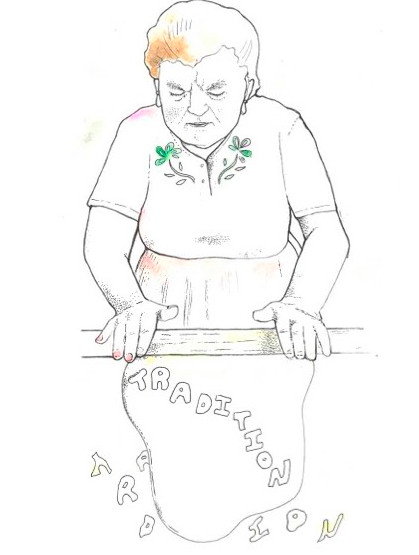Left behind culinary culture
Women’s contributions still pushed to the margins
If breathing is our most instinctual act, then eating is our most human. Hunger indicates our enduring survival, but a good meal is proof that we’re living.
Many of my most cherished childhood memories involve gathering around a table and enjoying a delicious meal prepared by my grandmother. Both sets of my grandparents immigrated to Canada in the 1960s from southern Italy with minimal possessions but a robust cultural background and recipes to boot.
Sugo, or tomato sauce, is a Sunday-dinner staple. Tiramisu is a classic dessert for any special occasion, whereas panettone is Christmas-specific. Pastina is a sure-fire cure for ailments, and espresso cafe is a readily available pick-me-up.
Food does more than permeate Italian culture, however. It is its backbone. Anytime my nonna comes over for dinner, she always brings more than herself to the table. When she walks in the front door, the comforting scent of her perfume is second only to the smell of frittelle wafting up from her carefully repurposed plastic bags.
Food is more than simple units of energy. For most, food represents the comfort of home and the innocence of childhood – but food is now also cooler than ever.
Sourdough baking became a popular pastime during the COVID-19 pandemic. But the folksy tradition of bread baking, undertaken by women for millennia, became a trend dominated by men influencers and celebrity chefs.
Most of the culinary stars who have gone on to become household names are men, including Gordon Ramsay, Jamie Oliver, and Guy Fieri. The commercial culinary institution is represented overwhelmingly by men. But when 75 per cent of American women remain the regular meal preparers in their households, it seems people forget about the forces behind the scenes.
David Rocco is a popular Canadian-Italian food personality with a dedicated social-media following, TV show and a few cookbooks. In his first cookbook, Dolce Vita, Rocco’s recipes are peppered with titles such as Pepperoni Di Zia Franca (Pepperoni from my aunt Franca) or Spaghetti Alla Puttanesca Di Nonna Maria (Spaghetti Easy-style from my nonna Maria).
These references give readers a sense of proximity towards characters who seem both integral to and invisible in the face of Rocco’s legacy. They are kept at an arm’s length, and for good reason. Rocco himself writes: “After tasting (the recipe), you’ll want my Zia Franca’s phone number so you can thank her.”
Wouldn’t readers rather ask Zia Franca herself? Due to language and socio-economic barriers, the matriarchs who inspire the industry often never set foot in a commercial kitchen.
My nonna tells a wonderful story of “borrowing” her neighbour’s bicycle when he was at work, fingers wrapped firmly around the handlebars as she flew up and down the streets of Consensa.
Those same powerful fingers deftly prepare meals as though imbued with a sixth sense. In these moments, she flies again. There is no recipe, no dog-eared cookbook. There is only muscle memory, a flour-stained apron and an unshakable gut feeling.
For those with parents and grandparents still living, there is no better place to learn about the food that nourished and shaped their families. To prematurely outsource this gift from our mothers and grandmothers is to reject the connection we crave. These recipes have been passed down as a love language amongst women for generations, free of charge. The tax is love, the only interest is the promise you’ll come back for more.
Antonietta Bueti is a first-year University of Winnipeg student running on pasta and espresso.
Published in Volume 77, Number 17 of The Uniter (February 2, 2023)







